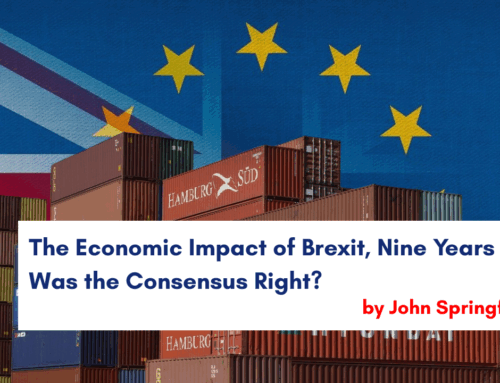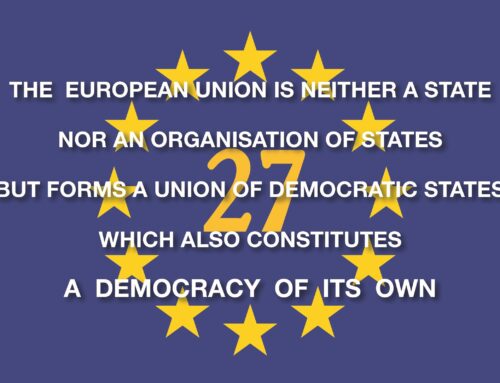The European Union (EU) has launched the world’s first Carbon Border Adjustment Mechanism (CBAM) having effect from 1st October 2023. CBAM is a part of the EU’s “Fit for 55” legislative package to reduce emissions by at least 55% up to 2030 from 1990 levels.
How CBAM works
CBAM is specifically applicable to goods imported into the EU. It is designed to establish carbon pricing for imports equivalent to domestic production which is affected by the EU Emissions Trading System (ETS). Under the ETS scheme, emitters must either lower their emissions or purchase emission allowances on the carbon market at a given carbon price.
CBAM was effectively created to minimize the likelihood of EU businesses avoiding the EU’s local carbon price by importing products from outside the EU; by doing so, it will enable a level playing field between imported and domestically produced goods.
The sectors falling under CBAM at the outset of its application will include the following: cement, fertilizers, iron and steel, aluminium, electricity and hydrogen. Other sectors will be included over time to eventually cover the full range of products traded under the ETS by 2030.
CBAM’s financial charges will apply to imported goods from 1st January 2026, from when imports will only be authorised for approved importers who will have to submit CBAM declarations annually. The reporting will involve calculating an EU importer’s total imported goods and associated embedded emissions. This would form the basis of purchasing CBAM certificates, minus any carbon price already paid abroad.
UK exporters’ obligations towards EU importers
It would be unlikely that EU companies will face a CBAM financial charge on importing UK goods due to the UK’s already having a similar ETS carbon pricing scheme to that of the EU’s. As a result, EU importers of UK goods will be able to claim a credit for any UK carbon price paid in purchasing CBAM certificates.
On the other hand, EU importers will be faced with CBAM reporting requirements on goods exported from the UK unless the British government connects its UK ETS to that of the EU’s scheme. This was an option made available under the 2021 Trade & Cooperation Agreement and if implemented would make the UK fully exempt from CBAM’s coverage. At present, only European Economic Area countries and Switzerland are fully exempt from CBAM given the former participate in the EU’s ETS, while the latter has connected its ETS to the EU’s scheme.
Even though the future of connecting with the EU’s ETS remains undetermined, UK exporters, as suppliers to their EU customers, will need to furnish embedded emissions information. Such data must be verified from 1st January 2026, where EU importers will begin purchasing CBAM certificates. The detailed procedures will be laid out in upcoming Commission implementing legislation.
The first implementing act, which came into force in mid-September 2023, sets out the transitional reporting period during the first year of CBAM’s operation. It requires that EU importers can select to report according to one of three methodologies; being either the new EU system or equivalent third country national system or in accordance with certain reference values. The EU system will be the exclusive method from 1st January 2025.
The legislation of September 2023 lays out rules concerning emission measurement methodologies. When furnishing EU importers with the needed data, UK companies should consider setting up systems for collating information which would include:
(a) the quantity of the goods exported to the EU importer, expressed in megawatts for electricity and in tonnes for other goods; and
(b) the type of goods as identified by their Combined Nomenclature (CN) code. UK exporters should note that the CBAM goods are listed in detail in the CBAM regulations in accordance with their CN code and allocated to the product categories electricity, cement, fertilisers, iron and steel, and aluminium; and
(c) the country of origin of the imported goods; and
(d) the installation where the goods were produced and overall installation emissions; and
(e) specific direct and indirect emissions data, where relevant; and
(f) production routes.
In situations where UK exporters fail satisfactory emissions data, the price of a CBAM certificate may incorporate financial penalties. UK exporters should therefore ensure they are in a position to supply high quality and verifiable data.
Although EU importers’ financial obligations do not kick-in until 2026, given that trading contracts and arrangements are often long-term in duration, UK exporters ought to plan ahead for how CBAM could affect their goods prices. Accordingly, UK companies should implement concrete action plans to mitigate the future financial repercussions of CBAM on their EU export markets, in addition to considering reductions in the embedded emissions of their products ahead of 2026.
Conclusion
Earlier this year, the UK government started a consultation process for developing a UK CBAM. Similar to the EU CBAM, it would apply to imported goods. The UK CBAM would be introduced in 2026 coinciding with full application of EU CBAM. The range of goods sectors to be covered by the British system would, at the outset, largely overlap with those of the EU version.
Other than the worthwhile endeavour of protecting Britain from becoming a dumping ground for high-carbon imports, the administrative and reporting costs in complying with two different sets of carbon border taxes, for both UK and EU exporters in their bilateral trading arrangements, can only be described as a waste of time and money for all concerned. Any possible future Brexit deal, as recently touted by the leader of the Labour Party, Sir Keir Starmer, should, at the very least, ensure the respective CBAMs are linked together to provide full exemptions from onerous and unnecessary red tape in bilateral trade between the EU and the UK.







Leave A Comment